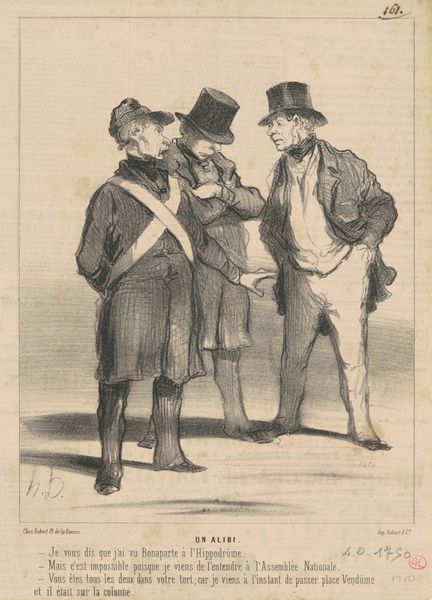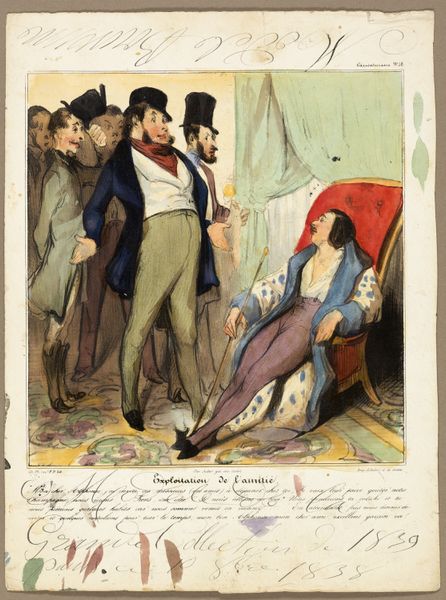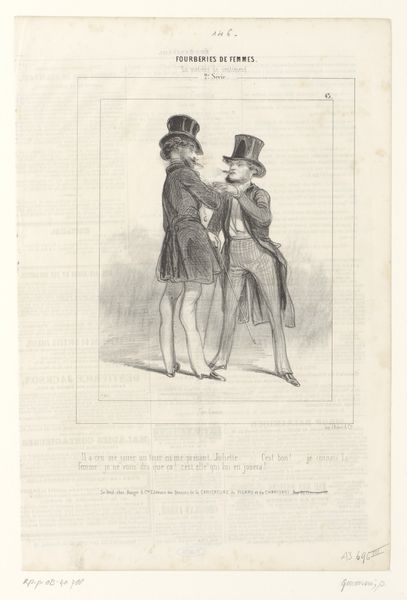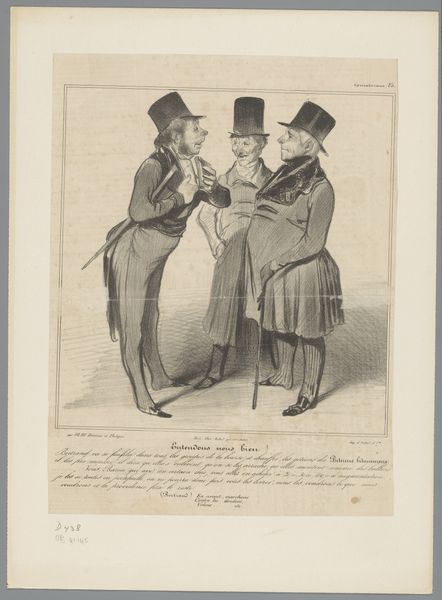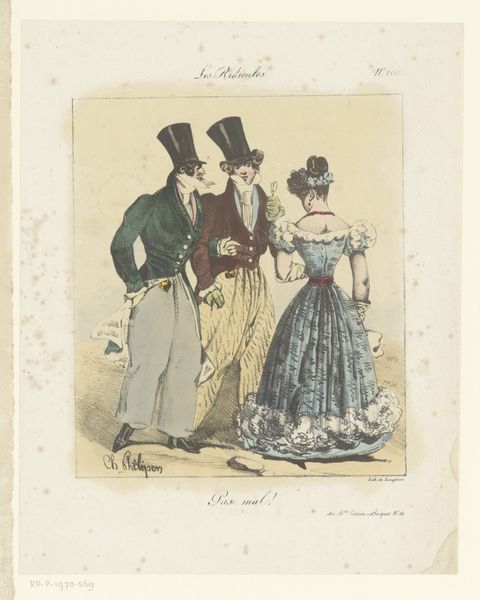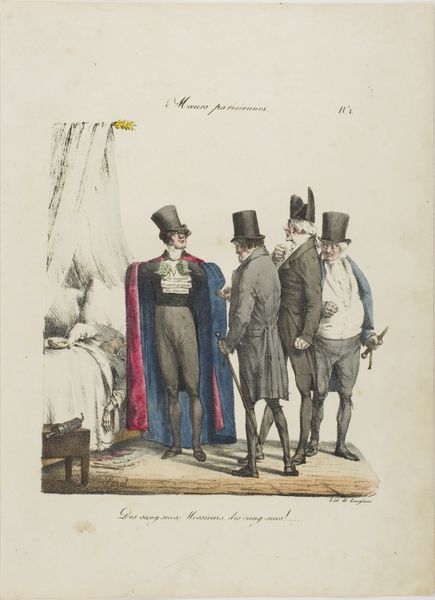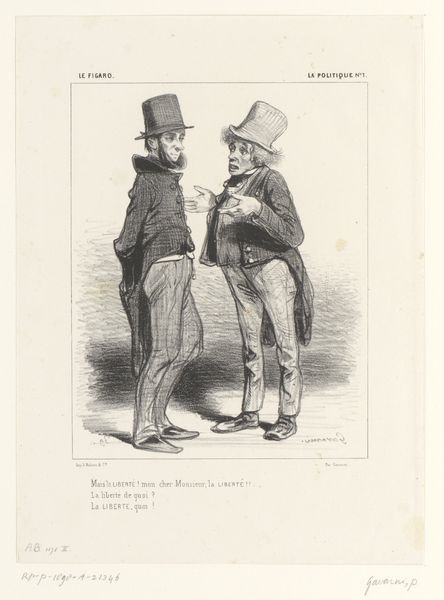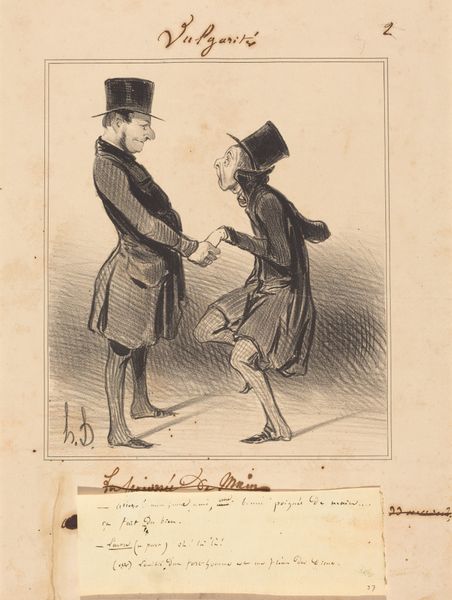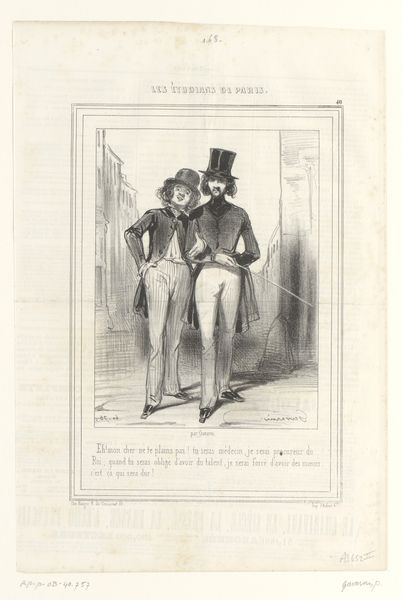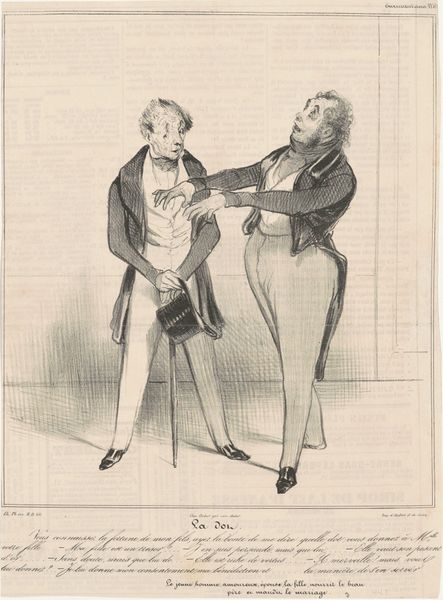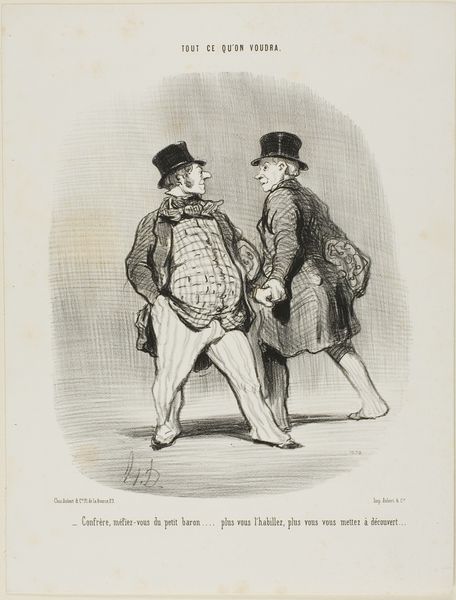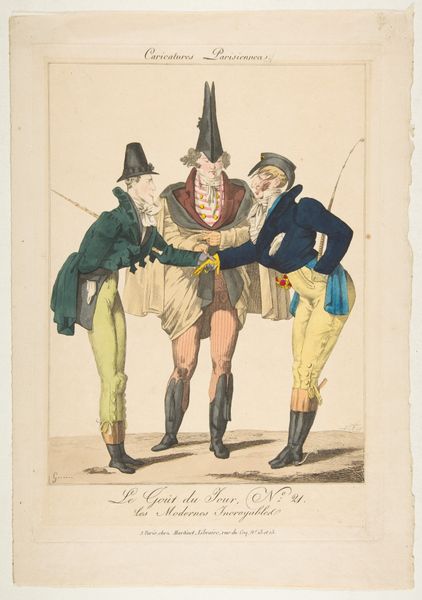
A Candidate. “Who do you want?... An upright, conscientious, sober man, an industrialist, a man who doesn't need the government to enrich himself, a man familiar with the law, who knows it well, through practice, very long practice... a long practice of law... you can't choose any better than... my honorable friend,” plate 48 from Caricaturana 1837
0:00
0:00
drawing, lithograph, print, paper
#
portrait
#
drawing
#
lithograph
# print
#
caricature
#
caricature
#
paper
#
romanticism
#
genre-painting
Dimensions: 360 × 270 mm
Copyright: Public Domain
Curator: Today we’re looking at Honoré Daumier's lithograph from 1837, “A Candidate. 'Who do you want?...'” part of his “Caricaturana” series, held here at the Art Institute of Chicago. It's quite a mouthful for a title, but accurately describes the scene! Editor: Absolutely. The immediate feeling is one of biting satire. The exaggerated features, the almost grotesque rendering of these figures—it’s meant to make you uncomfortable, right? Look at the way the figure on the left is physically grabbing the candidate and aggressively pulling him into the conversation! It is a raw view of political maneuvering. Curator: Precisely! Daumier used his lithographs as powerful tools of social and political critique. Consider the historical context; this was during the July Monarchy in France, a time of immense social and economic disparity. The bourgeoisie was gaining power, and Daumier relentlessly lampooned their corruption and self-interest. Editor: And we see that reflected so clearly here. These aren’t just portraits; they're exposing the deep-seated issues within the social and political systems of 19th-century France, particularly this performative sobriety and manufactured integrity for political gain. The title is nearly mocking itself when listing desirable traits and culminating into a final "you can't choose any better than... my honorable friend”. Curator: He does that so skillfully! The composition directs the eye to the central figure, the "honorable friend", with his puffed chest and self-satisfied expression, it really drives home the point that those in power were concerned primarily with their own enrichment, completely betraying the promise of governmental integrity and leadership. Editor: Exactly. And thinking about the broader narrative of art history, Daumier challenges the idealization prevalent in Romanticism and Neoclassicism, opting instead for this unflinching portrayal of reality. He pushes boundaries by presenting uncomfortable truths. It speaks to a legacy that resonates today, considering what images are chosen to represent politicians, the people they champion, and to whom they perform honesty. Curator: Daumier's use of lithography, a relatively new and accessible medium at the time, allowed him to disseminate these critical images widely, fostering a public dialogue. It's a testament to the power of art as a vehicle for social commentary and the impact it had on shaping public opinion and how political leaders present themselves. Editor: It’s hard not to look at this artwork without thinking of all that is still relevant today! He may not have predicted so far into the future, but it holds up. Curator: A prescient and deeply influential work, that remains relevant nearly two centuries later.
Comments
No comments
Be the first to comment and join the conversation on the ultimate creative platform.
